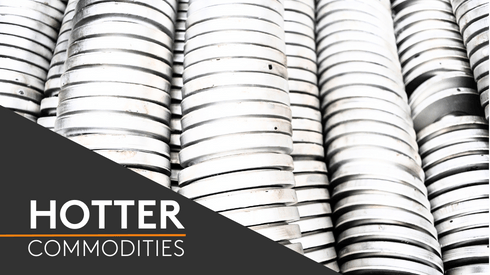The base metals have had an eventful first quarter and an unprecedented March, with many all-time highs for prices and premiums. These came in response to a myriad of drivers, including production disruptions exacerbated by the war in Ukraine, sanctions on Russia and elevated energy costs. In addition, base metal markets have had to negotiate soaring inflation, supply chain snarl-ups, declining physical inventories, investor portfolio diversification and a historic short squeeze.
Aluminium: More supply disruptions
The bullish narrative around aluminium centers on heightened supply disruption risks in the face of the Russia-Ukraine war, sanctions on Russia and high energy prices in Europe. In the past few weeks, news flow has emboldened the aluminium bulls, first with Australia’s ban on alumina exports to Russia and then, most recently, with German smelter Trimet joining the list of European peers forced to reduce output.
The global aluminium market was already heading for an enormous supply deficit this year, and developments like these only widen the supply-demand imbalance. The outlook for prices is still bullish, especially as long as sanctions on Russia remain in place and continue to disrupt flows of aluminium, its raw materials and energy.
Copper: Price recovery likely to continue
Copper prices have recovered well from their local low on March 16. This corroborates our view that the sell-off earlier in the month was induced by liquidity issues rather than a negative change in the fundamentals. In fact, we continue to view the refined copper market as meaningfully tight and expect traders to resume their long position building.
Meanwhile, any price decline below $10,000 per tonne should attract dip buyers, as was the case earlier this month. In the current environment, volatility in the copper market is here to stay, but we remain convinced that copper prices should trade well above their current levels over a 12-month horizon.
You might also like:
- Base metals’ fundamental backdrop to remain healthy in year ahead: 2022 preview
- Ukraine war prompts Chinese traders to eye base metals exports
- Ukraine crisis drives rush to secure supply in global metal markets
Lead: Price may consolidate next
As expected, lead prices put in a stronger performance last week, ending back above $2,300 per tonne. Winter is typically a strong period for replacement battery demand. But given that winter is turning to spring in the northern hemisphere, and OEM battery demand will be affected by disruptions faced by automakers, lead prices could be seen as relatively elevated from this seasonal fundamental perspective.
We would not be surprised to see lead’s price performance soften in the weeks ahead. This is in line with the sideways pattern of Q2 2021 and our base case cash price forecast for Q2 2022, which remains unchanged this week.
Nickel: Trying to find its level around $30,000/tonne
Nickel prices remain volatile, with the focus of trading around the $30,000-per-tonne level. We reiterate that our price forecasts beyond the short-term, technically-driven correction, remain unchanged and continue to be grounded in nickel’s fundamentals, which still look strong.
We still forecast a global supply deficit of 93,000 tonnes this year, which means there is fresh upside potential for prices once the dust has settled over the short squeeze shock.
Tin: Consolidation continues
Tin prices have continued to trade sideways since their steep sell-off on March 9. This looks normal after the outsized price gains earlier in the year.
Fundamentally, the global refined tin market remains tight, which should keep prices elevated. Although metal availability should improve due to the resumption of Indonesian tin exports, most of the material will be sucked into China, keeping the global market tight. Against this, we expect tin prices to retest their all-time high in the coming months.
Zinc: Demand outlook revised, but deficit still stands
We have reduced our zinc demand outlook for Europe this week due to the automobile and galvanizing steel industries’ supply chain links with Russia and Ukraine. As a result, the global refined zinc market deficit for 2022 has fallen by around 50,000 tonnes. But at 193,000 tonnes, the projected supply shortfall this year is still meaningful and continues to support a bullish outlook for zinc prices.





